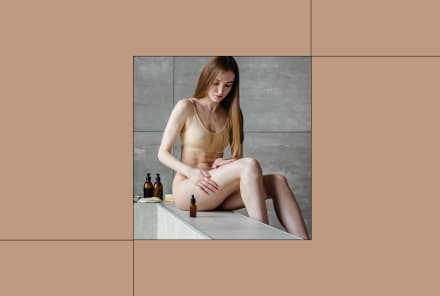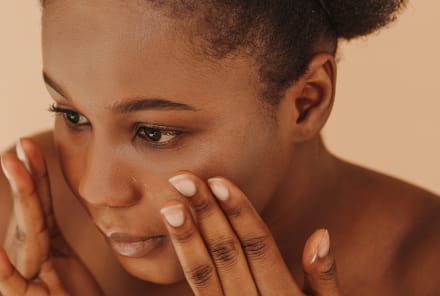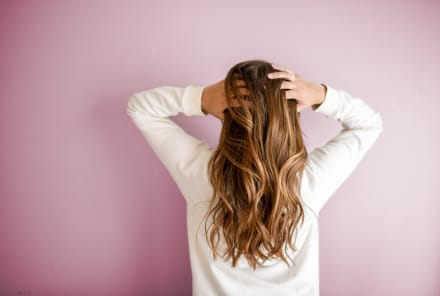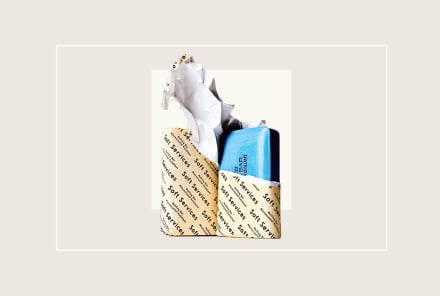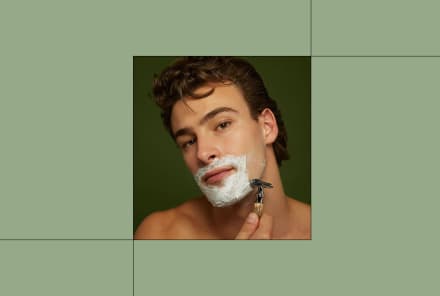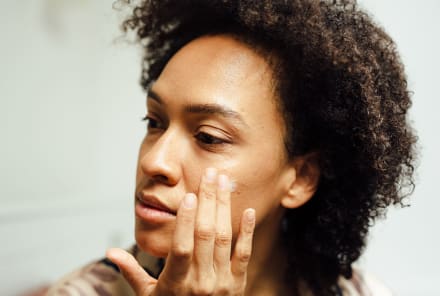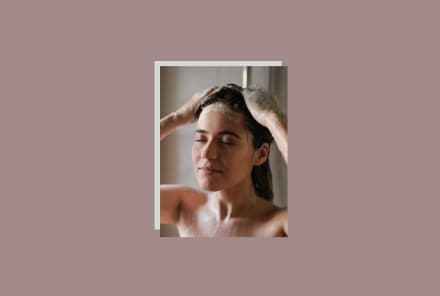Advertisement
Type 3 Hair: How To Identify Your Hair Type + Curly Hair Styling Tips From The Pros

The beauty industry certainly loves a classification system: from skin types to face shapes to hair types, we're always trying to figure out exactly where our unique features fall. Now, beauty is fluid and diverse—meaning we'll never fall into one box perfectly. (For example, someone who identifies as having oily skin can still have a few dry or sensitive days, too!) But sometimes labels can help us create language and handy guides on how to better take care of ourselves—which is why we use them in the first place.
Such is the case with hair types. These range from 1 (straight) to 4 (kinks), each with additional subtypes that further break down the texture and patterns of the strands on our heads. Now, most people have multiple types to care for—additionally, factors like porosity, density, and lifestyle factors can all play a role in your hair care routine. So, no, this isn't an exact science. But understanding your type is a very good place to start.
Hair type
We're getting into the details of type 3 in this story, but it never hurts to cover hair types generally, in the event you need a refresher. As we noted, hair is categorized into types from 1 to 4, each with three smaller subsets noted as A, B, or C. Hair types aren't scientific terms (so this isn't a set standard crafted up by derms or researchers; in fact, it was developed and made famous by famed hairstylist Andre Walker), but it's pretty universally accepted among hairstylists, trichologists, and even many derms themselves!
As a rundown: Type 1 is straight, with the variance usually coming down to how flat your hair lies. Type 2 is wavy, with the major differences depending on how loose the S-pattern is. Type 3 is curly, which changes depending on how tight the curl is. And Type 4 is kinky or coily, which changes depending on whether the shape of the pattern is more zigzag or springs.
Finding your hair type.
Listen, you may find yourself here because you already know your hair type pretty well. But for those of you who need a bit more guidance, we actually created an mbg hair type quiz that takes only a few minutes. So click the link below and come back here when you have your results.
But let me just say again, most people have a few patterns to deal with or a patch or two that doesn't seem to fit in with the rest. So you might have to do different techniques for different areas to make it all uniform—or go all-in on the unique textures! Not to mention there are other factors at play: hair porosity, density, and strand thickness. Essentially you've just got to get to know the many facets of your hair, not just type.
"I cannot stress studying your hair enough. A stylist can only give you recommendations, but essentially you go home with your hair," says Danielle Malary, owner of Lumiere Vive Salon. "Feel your hair out, document how it reacts. Essentially, keep a journal for your hair and learn to love it."
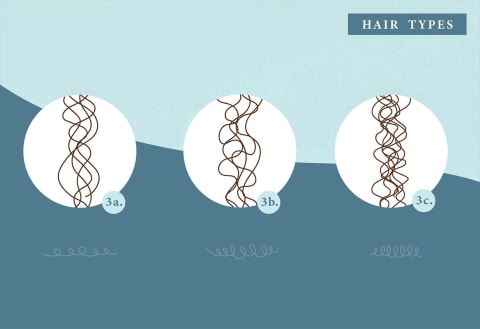
Type 3a
As the loosest curls, these are usually the most finicky and least defined of this bunch. They can be described as medium-barrel curls and can have a lot of variety in the sizing of the different sections. As they are not as defined inherently, they can be weighed down by product easier, too.
Styling tips:
- You want to make sure this curl type doesn't get weighed down with too much product, as it can stretch out the curl pattern—making it more wave-like than curly. One way to do this is with regular clarifying sessions, says Malary (she recommends once a month for those with curly hair). Clarifying shampoos are like a powerwash—and are able to lift off debris, dirt, and oil from the scalp and cuticle. Try subbing in one of these options. Friendly reminder: You shouldn't use a clarifying shampoo on the regular, as the formulas are too stripping for your hair; use them too often, and they can cause brittleness, breakage, and even an irritated scalp.
- This type tends to be the least voluminous of Type 3 hair, as it's a looser spiral. Because of this, you may be looking for ways to increase volume. We recommend diffusing your hair while flipped upside down, as this creates space at the root. According to celebrity hairstylist Nate Rosenkranz, a diffuser is all about the airflow. "A diffuser slows and distributes the airflow coming from within the dryer," he says. "It works to gently dry the hair without disrupting the curl pattern, which is typically highly susceptible to frizz."
- If you're not one for using a hairdryer, not to worry. Hair plopping is your friend. Essentially, you're cradling your hair into a T-shirt, then setting it on the top of your head for a no-fuss air-dry. "It can add volume in the crown by creating lift at the roots," says texture specialist and artistic director at Matrix Michelle O'Connor. It can also give you an enhanced, frizz-free curl (it keeps you from touching the hair while it dries, and the tee is much softer on your hair shaft than a traditional towel, which can take out too much moisture).
Type 3b
Here your spirals are getting tighter and more defined. These will look like bouncy ringlets with a bit of spring and pop. The width of these is similar to a large marker. The hair is also quite voluminous and lush-looking.
Styling tips:
- Even though these curls are more defined on their own, they still could use some help from a curl cream. Check out our favorite curl creams here, then always apply it on sopping wet hair: According to hairstylist and founder of Hair Rules Anthony Dickey, there's a shorter window in the drying time before this curl type starts to frizz up. He advises applying your curl creams right in the shower, no towel dry prior: "That's when they have the least amount of frizz."
- Almost all curls have an increased need for hydration, this type included. Malary recommends skipping the conditioner—and going straight for the mask. Hair masks are usually made with richer butters and thicker oils, so they have more conditioning and hydrating abilities. "Instead of saving a mask for treatments, just use it as your go-to conditioner as they'll give you more moisture," she says.
- No matter your hair type, we often recommend avoiding sulfates as they are stripping, irritating, and can disrupt your scalp's microbiome. But starting at around 3b, these detergents are a hard no-go, as it will dry out the already moisture-strapped strands. Check out our favorite sulfate-free shampoos here.
- We even recommend avoiding over-shampooing (sulfates or not!) too. One way to keep strands hydrated, curled, and fresh? "Co-washing—or, conditioner washing—allows for gentler cleansing without the drying detergents that can harm the scalp and hair. Also, co-washing protects the integrity and strength of the hair while maintaining its natural oils," says hairstylist Miko Branch, co-founder of natural hair care brand Miss Jessie's. For more information, check out our co-washing guide.
Type 3c
This pattern is a tight loop, with a circumference like a pen. They're also the closest to type 4, and share many characteristics of that grouping—such as being prone to breakage or dryness. You'll also have a lot of volume, starting right at the root.
Styling tips:
- As these are the closest to type 4, they'll share many of the same care and styling tips. One of the main priorities? Protecting your hair from breakage. Limiting breakage takes a multilayered approach: To start you should be sure you are coating strands with a hydrating and protective barrier with leave-ins and creams. You should also be sure to detangle it gently—like very gently—using a product with some slip and working from tip to root. And if you choose to heat style, always pair it with a heat protectant.
- While protecting the strands you already have, you can also encourage healthy growth at the root. Since breakage is common, you should encourage healthy hair growth. Pay attention to your diet (which can influence your hair health), give yourself regular scalp massages (which can stimulate blood flow to the area), and use topicals with hair-enhancing botanicals (like rosemary and tea). For more hair growth tips, see here.
- Use a protein treatment to help build up strands' delicate bonds, as this type is more prone to damage. "Light protein conditioners and deep conditioners that are protein-based can be used weekly or every two weeks as part of a healthy hair care regimen to support a moisture-protein balance, depending on your individual hair needs," says hair care expert Sarah Roberts about conditioners. "Reconstructors and protein packs are generally designed for more damaged hair and are recommended to be used monthly, depending on the hair's health and the needs of the individual."
Other hair traits to consider.
Think of hair types like you might skin types. Sure your skin can fall under a general category of characteristics, but other factors will also influence your overall skin care routine, such as age, lifestyle, specific conditions, and tone. And while hair type plays a large role in your routine, the below will too.
Hair porosity
"Hair porosity describes how the hair's cuticle absorbs and holds on to moisture in its pores—hence, the term porosity," says Branch. And it's a spectrum, ranging from high to low. High porosity means the cuticles are more open, so hair absorbs water easily. But it also means it evaporates easily. Hair that has low porosity has dense cuticles. This means the hair has a harder time absorbing water, product, or even your scalp's natural oils, and you'll see buildup faster. It also takes longer to dry after getting wet as it's holding all that water in. Then you can fall somewhere between these two ends of the spectrum, which is considered medium porosity. You can take our hair porosity quiz for more information.
Hair density
Hair density is basically how full your head of hair is. According to celebrity hairstylist Ryan Richman, "The density of the hair is determined by how close your hair strands are to each other. This, in turn, determines how thin or thick your hair appears." Scalps with more hair follicles often appear more lush and full—but may also be drier (especially at the ends) and harder to manage. Scalps with low density may mean wider parts and thinner styles but will usually be shiner and easier to hydrate, says Richman.
Hair thickness
Thickness and thinness are often confused with density, but the two actually refer to the diameter of the strand. Thin strands have a small circumference, while thick strands are larger. If you don't know where you fall, you can try the fingertip test: roll around a strand of hair between two fingers. If you can feel it, you have a thick diameter. If it's basically undetectable, it's likely on the thinner side. We recommend trying this with several strands on your head, as diameter can change depending on the area of your scalp.
The takeaway.
Caring for your precious strands means you need to get to know them. One huge part of that puzzle? Your curl type.
Watch Next
Enjoy some of our favorite clips from classes
Enjoy some of our favorite clips from classes
What Is Meditation?
Mindfulness/Spirituality | Light Watkins
Box Breathing
Mindfulness/Spirituality | Gwen Dittmar
What Breathwork Can Address
Mindfulness/Spirituality | Gwen Dittmar
The 8 Limbs of Yoga - What is Asana?
Yoga | Caley Alyssa
Two Standing Postures to Open Up Tight Hips
Yoga | Caley Alyssa
How Plants Can Optimize Athletic Performance
Nutrition | Rich Roll
What to Eat Before a Workout
Nutrition | Rich Roll
How Ayurveda Helps Us Navigate Modern Life
Nutrition | Sahara Rose
Messages About Love & Relationships
Love & Relationships | Esther Perel
Love Languages
Love & Relationships | Esther Perel
-v1646695196476.jpg?1148x800)
